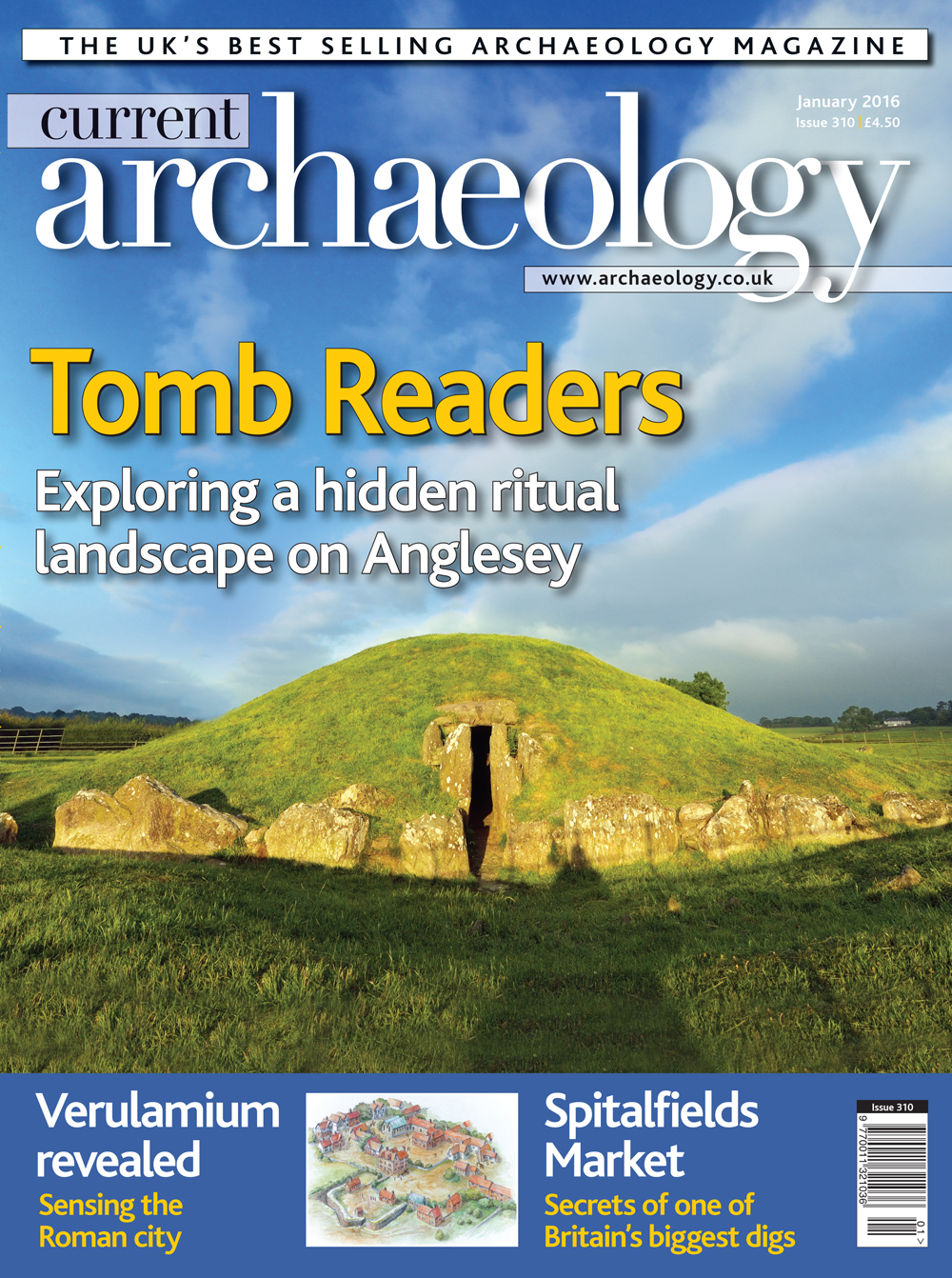Archaeology is all about teasing out hidden details. At Verulamium, the site of the Roman city scrutinised during recent investigations is conspicuous enough, but its streets and city blocks have long since grassed over. Now geophysical survey has laid bare one of the great cities of Roman Britain.
On Anglesey, a project is seeking to reveal a lost prehistoric ritual landscape. Previously, this has been eclipsed by the spectacular passage tomb at its heart. A wealth of ancient art serves as a reminder of what can be overlooked when we are transfixed by impressive monuments, at the expense of more ephemeral activity in their hinterland.
Before Wallingford Castle was reduced to rubble by Oliver Cromwell’s soldiers, its grandeur rivalled the strongholds at Windsor and Oxford. Today, little more than earthworks studded with shattered masonry remain, but combining survey, surviving documents, and excavation allows us to glimpse the former glory of a royal castle.
At Spitalfields, the flourishing post-medieval suburbs were gradually engulfed by later urban development. The Spitalfields Market excavations opened up a huge swathe of lost London, exposing the hidden habits of its former inhabitants to modern scrutiny.
Matt Symonds
IN THIS ISSUE:/n
FEATURES/n
VERULAMIUM REVEALED/n
Sensing the city
The third biggest city in Roman Britain, Verulamium (modern St Albans) is beingbrought to light once more by an innovative community geophysics project.
BRYN CELLI DDU/n
Exploring a hidden ritual landscape
A recent public archaeology project has identified a wealth of previously unknownrock art around one of Wales’ most famous Neolithic passage tombs.
WALLINGFORD CASTLE/n
The rise and fall of a royal stronghold
At the end of the Civil War, Wallingford’s castle was reduced to ruins and a fewearthworks. Now 15 years of historical and archaeological research have broughtnew life to its once mighty fortifications.
EXCAVATING SPITALFIELDS MARKET/n
The final chapter uncovered
Recently published findings from one of Britain’s biggest ever digs reveal how thesite of a London priory evolved into a gunnery, an artillery fort, and a flourishingsuburb of prosperous houses.
/n
NEWS/n
Ice Age art in Jersey; Earliest human activity in Scotland identified;British Museum to help preserve Iraqi sites; UK’s earliest rickets areNeolithic; Cambuskenneth’s harboured secrets; Rufford Abbey’s Romanrevelations; Smoke signals from Bath; Crannog clues at Monmouth?;Blick Mead’s Mesolithic home comforts
REGULARS/n
Conference
Current Archaeology Live! 2016 isapproaching fast. This special sectioncontains the latest details of thetimetable, speakers, and ArchaeologyAwards nominations.
Reviews
The Real Lives of Roman Britain; Celts:Art and Identity; The Remembered Land
Museum
Egypt: faith after the pharaohs at theBritish Museum
Sherds
Chris Catling’s irreverent take on heritage issues
Odd Socs
The Musical Box Society of Great Britain

